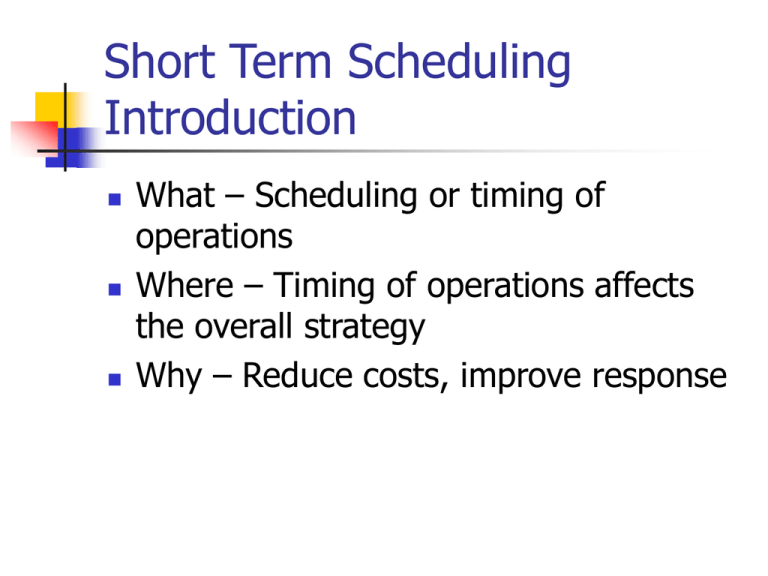Short Term Scheduling Introduction
advertisement

Short Term Scheduling Introduction What – Scheduling or timing of operations Where – Timing of operations affects the overall strategy Why – Reduce costs, improve response Scheduling Forward Scheduling Backward scheduling Scheduling criteria Minimize completion time Maximize utilization Minimize work-in-process Minimize customer waiting time Objective: Optimize resources so that production objectives are met Scheduling in ProcessFocused Work Centers Job shop, low volume, high variety Schedule incoming orders without violating capacity constraints Check availability of tools and materials before releasing an order Establish due dates and check progress Check work in progress Provide feedback Monitor work efficiency statistics Loading Jobs in Work Centers Input-output control Gantt charts Sequencing Jobs at Work Centers Priority Rules First Come, First Served Shortest Processing Time Earliest Due Date Longest Processing Time Critical Ratio Time Remaining / Workdays Remaining Highest Critical Ratio is selected for processing next Limitations of Rules Scheduling is dynamic Rules do not look upstream or downstream Rules do not look beyond due dates Finite Scheduling Computerized Short Term Graphical Interactive Constraints and Bottlenecks Limit output in the production sequence Increase capacity Reroute work Change lot size Change work sequence Accept idleness


